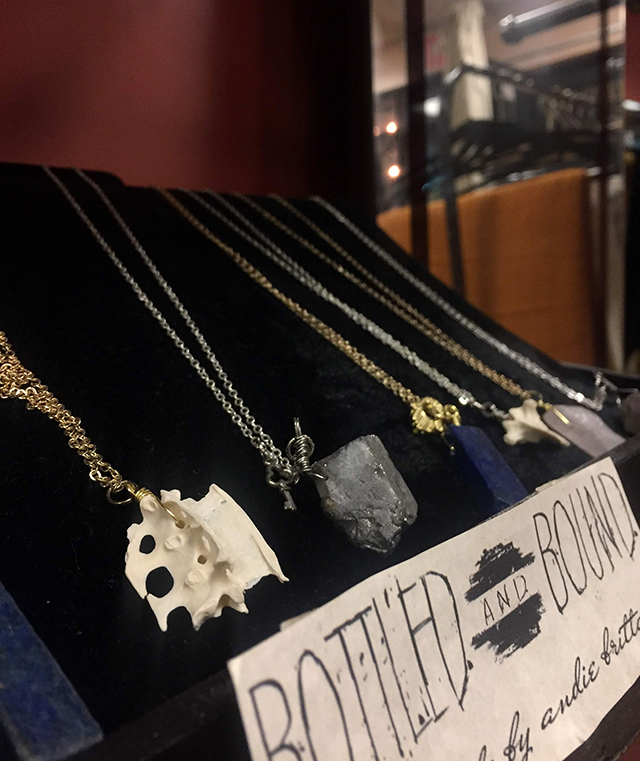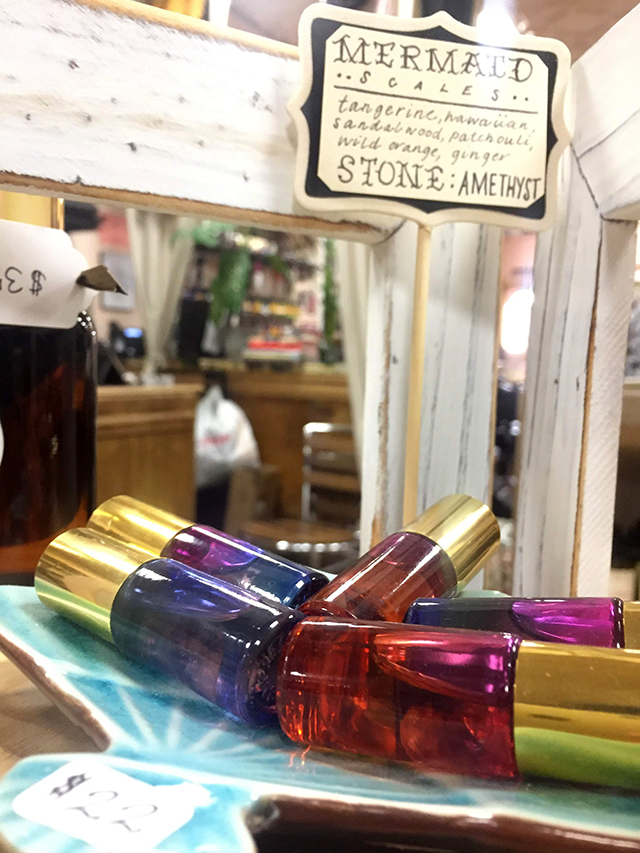There’s a party every weekend. Friday and Saturday nights I’m trying to find a sparkly shirt or dress to wear. Preferably not the one I wore last week. I’ve eaten more cheese and antipasto than normal, not to mention cookies and chocolate, which I don’t even really like. I had my own “kick-off to Christmas” party the first week of December, which was a shining success.
Balancing the parties, decorating and shopping with my increased seasonal workload is tough when you’re a freelancer working from home. Should I?
A: Wrap Christmas presents with a Hallmark movie playing in the background
B: Start designing the countless “the gift that counts” emails or the holiday menu ads and promotions mounting in my queue.
[Correct answer is A, by the way]
When I do have a minute in the evenings, I sit in front of my glowing Christmas tree, and my mind starts to wonder to the Christmases of yesteryear. Things seemed so simple then. That feeling of being a kid the night before Christmas will never leave me. My sister Maria and I shared a room and we would giggle under the covers with butterflies in our stomach. It felt like the morning would never arrive. But soon enough we’d wake up to a pile of presents displayed on the living room floor, ready for us to tear open.

When I look around, I see ornaments that used to belong to my grandmother, another reminder of Christmas past, when things seemed less hectic. On my end table, sits grandma Mary’s ceramic drunken elves (Lipper & Mann 1956). Each one his hugging a lamp post, eyes closed, slipping down the pole!

I inherited my grandmother nativity as well, which I really love. I recall being at my grandparents house as a child for Sunday dinners in December. I’d lay on her green shag rug with my head practically under her Christmas tree, where the nativity was. I would play with the sheep and the holy figurines, but this was no toy. It seems the set is handmade. It’s not marked with product stamps or stickers and its very unique to the eye. Mary and Joseph’s expressions along with the others are vivid and pretty strange actually. Made from plaster, I’ve had to glue some heads back on and a sheep’s tail since I’ve had it, but nonetheless, it’s priceless to me.

Having these little reminders around my house of Christmas past helps to keep me focused and reminds me to slow down and embrace the season for what it truly is about. Happy Holidays and keep calm for Christmas!
by Paula D.
on December 11, 2018 4:16 pm in DIY
I heard positive feedback about my Kitchen Hacks column from a few weeks ago. Using sunglasses to prevent one’s eyes from tearing up while chopping onions and lining a bowl with a compost bag for easy kitchen clean-up were helpful hacks I’m told! So, here’s Part 2 as promised.
— Make your own “house blend” spice. Most of the time I use the same four spices in my meals and green salads – salt, pepper, garlic powder and oregano. Instead of pulling out all of your go-to’s very time you’re cooking, combine those ingredients into one jar at equal parts or to your preference. Next time you’re making a salad, you can quickly grab just that one jar, instead of several. It’s a time saver and less clean up. Take it a step further and make other custom blends – an Italian medley, Mexican-mix, and an Indian blend.
— This is an old trick we all seem to forget so here’s a reminder – add a few grains of rice into your salt shaker to absorb moisture and prevent clumping and clogs.
— If your cutting board is not laying flat and seems to be curved, make sure you wet/wash each side of it after use. It will fall back into form. Adding moisture to both sides prevents the wood from warping.
— If unexpected guests text you and say they’re dropping by and your kitchen is a mess, hide everything in the dishwasher! What makes a room look messy is clutter. If you can get most of the counter clear, your kitchen will look clean and organized. A quick sweep and you’re all good! You can deal with the pile up in the dishwater later on.
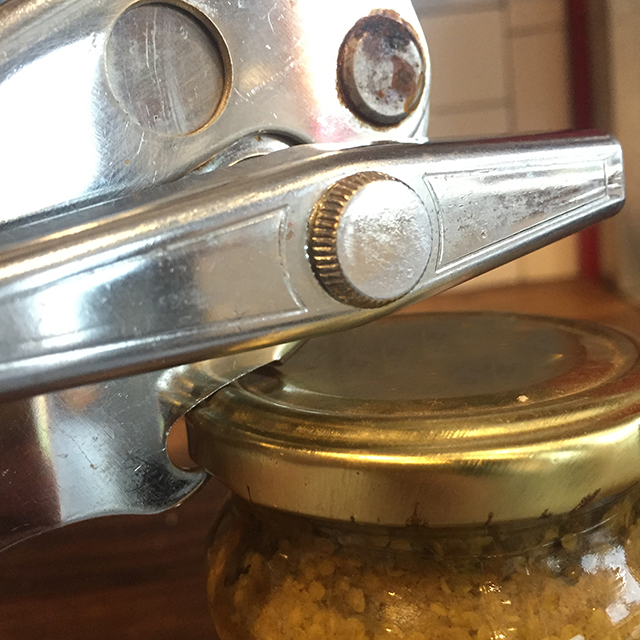
— Use the bottle opener tool on a can opener to loosen a jar top. You’ll hear an “air release sound” then it will open easily. Did you see the Curb Your Enthusiasm episode(S. 9, Ep. 2) with Funkhouser’s nephew Kenny and the pickle jar?!?! “Everybody’s gotta be the hero with the pickle jar.” Too bad they didn’t know about my trick!
— Always make extra. Cooking can be a lot of work, pulling out all the ingredients, making a mess, dirty pots and dishes, etc. If you’re going through all that effort and the mess will be made regardless, double the recipe. You’ll have leftovers all week. Or you can freeze some for use when you don’t feel like cooking, know you’re going to have a busy week and have no time to cook, or if you have unexpected guests. Back in the day my mother always had 30-40 meatballs in the freezer. If you get a “drop-in”, all you need to do is take those out of the freezer and through a pot of macaroni on the stove. Your uninvited, slightly rude guests will think you’re June Cleaver.
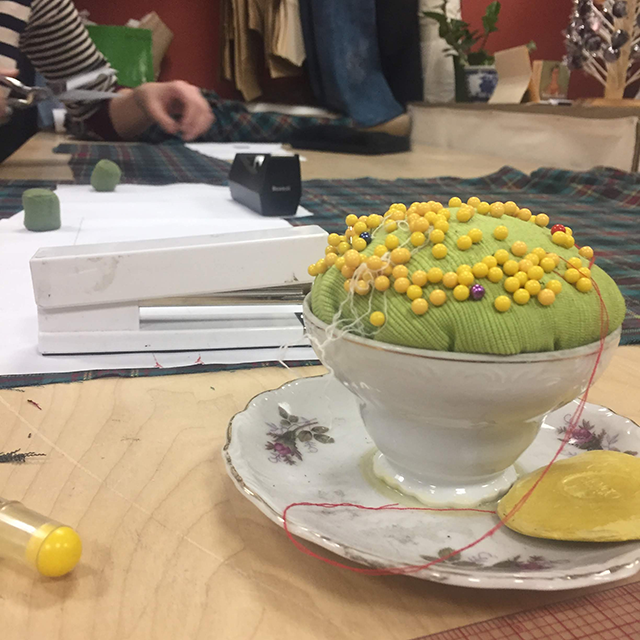
The first sewing class I attended at The Studio Phantasmagoria was not what I expected. I walked in and studio co-owner Jackii Ramis told the students to take a seat and relax. “Do you want some tea?” “Yes!” We all practically said in unison. Already my concern about having know clue how to sew dissipated. Jackii passed out booklets and we flipped through as the tea steeped. We reviewed the basics, discussed our pencil skirt pattern design and outlined what we would accomplish in each class. After taking our measurements we started cutting out the patterns. So far, so easy!
The atmosphere was casual and relaxed. I know sewing takes a lot of patience. Being engaged in one aspect of the project allowed me to focus on the task at hand and not worry about the big picture. This microstructure was intentional. It’s a philosophy Jackii follows as a designer and is a fundamental of her brand. “INDIGO APPAREL is a social brand created with the simple idea of taking things slow. We believe in the power of taking a slow journey through life, and are inspired by appreciation for the little things.”
The following Wednesday Jackii taught us to wind bobbins. She suggested making many at one time, so we’d always have one ready to go with the color needed. Next, we threaded our machines which was difficult for all of us beginner students. But we got the hang of it eventually, after a few “uh-ohs”! We learned to change tensions, and begin sewing on scraps, experimenting with different stitch types. The Studio Phantasmagoria has a zero waste initiative. They seek out designers and work with them, passing along unused fabric scraps, giving the textiles a second life. From 2017 to now, they have trashed less than 1 lb of material!
Class three was the most challenging yet! We starting sewing our skirt. To prevent the material from fraying, we contoured each piece with a zig zag stitch. After a few minutes, I was at ease with this procedure. The next step was to mark the darts on our pattern. This was the hard part where much patience was needed. Darts are folds (tucks coming to a point) and sewn into fabric to take in ease and provide shape to a garment. They are used frequently in all sorts of clothing to tailor the garment to the wearer’s shape. There are a few methods to mark darts. We used the fold and flip method. The pattern needs to be aligned with the material. You then fold on the pattern line so you can trace the shape with a wax pen. I tried my best. It was definitely not perfect but I was generally satisfied after many botched attempts.
Somehow, magically, I’m hoping I’ll have a finished holiday plaid pencil skirt with a zipper and all by the end of next class. Wish me luck!
If you missed the prelude to this column read about The Studio Phantasmagoria (92-10 Rockaway Beach Blvd) here.
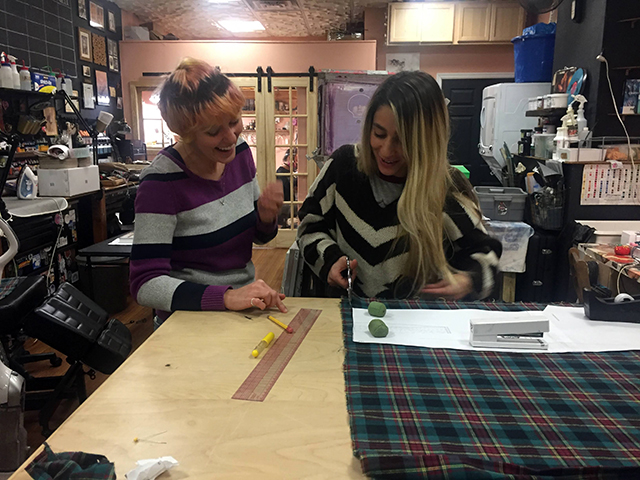
A month ago, my friend Jodi and I went to the Rock-a-Block Blvd. Street festival hosted by the Rockaway Business Alliance. This event is great because it gives you an opportunity to chat with neighbors, meet business owners and stroll into stores you don’t normally visit. Since The Studio Phantasmagoria opened last spring, I’ve been curious to check it out. “What’s going on in there? Let’s go in!” I said to Jodi. It felt whimsical, fresh and inspiring as we stepped through the doorway. I saw delicately dyed clothing, thoughtfully displayed handmade jewelry and soft crocheted hats, among other specialty items for purchase. Glancing beyond, I noticed an eclectic workshop. Threads of every color hanging from the wall; fabrics ready to be cut on the counter and the sewing machine was powered up to my right. To the left, there’s artwork tacked on the wall; figurines of cats, Buddha, elephants, a bottle of Jack Daniels and a rainbow of inks for tattooing.
Jackii Ramis, co-owner of The Studio Phantasmagoria greeted Jodi and I with a spunky smile. Jackii, from neighboring Long Beach, is a fashion designer with a focus on sustainable design and custom work. Indigo Apparel is her eco-friendly activewear brand which explores organic and recycled fabrics, low impact dying, and screen printing. Ramis’s business partner, Taryn Elise runs Tattoos by Taryn Ellis. She is heavily influenced by ornamental and neo-traditional tattooing, as well as patterning and custom lettering. Both artists craft their works out of The Studio Phantasmagoria.
Along with creating and selling their works and items made by other artists in the store front, the women host events and classes. Jackii mentioned she was teaching a beginners sewing class in November. I had taken a sewing class years ago which I enjoyed very much, but since then, my machine has been collecting dust. Signing up for Jackii’s class was the perfect incentive to get back at it. Both Jodi and I committed to the class! I’ll be reporting on my progress and experience working with Jackii at the The Studio Phantasmagoria in the upcoming weeks.

In recent years, Rockaway has earned a reputation as a place were women entrepreneurs prosper, engage the community and add value to the economic development of the peninsula. Co-owners Jackii Ramis and Taryn Elise of The Studio Phantasmagoria are proving to live up to this standard.
Get inspired by following @studio.phantasmagoria on instagram. To Learn about the creative classes offered at the Studio like figure drawing or the next sewing class, visit their Facebook page: facebook.com/studio.phantasmagoria/. The Studio Phantasmagoria is located at 92-10 Rockaway Beach Blvd. You’ll be sure to find great holiday gifts inside, so pop in and support this unique local business!
